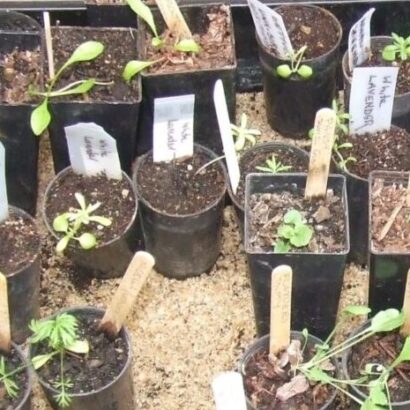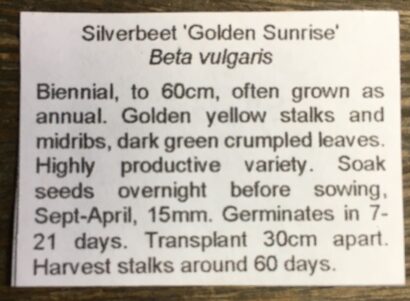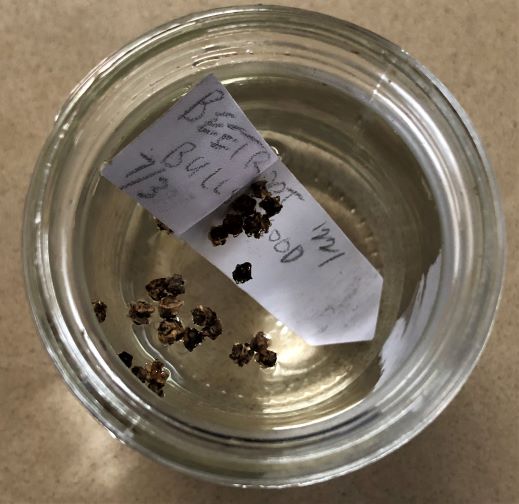For successful germination, seeds have four requirements: light, moisture, air, and soil temperature. In addition, some seeds, particularly those with hard coatings, need additional treatment, such as pre-soaking, to germinate more easily. Seeds also need to be planted at the right depth in an appropriate medium, to germinate and grow well.
LIGHT
Most seeds like to germinate in darkness, but some, like lettuce, prefer a little bit of light. Carrots particularly like to germinate in the dark; cover the sown seed with a tarp, plank or cardboard until the seed has germinated.
Refer to the seed packet for depth of sowing, which will ensure that the seeds get the light levels they like
MOISTURE and AIR
Different seeds require different levels of moisture to germinate and grow well. For most seeds, this is a consistently moist, but not soggy, soil. Lettuce dislikes being drowned. Peas and beans will rot in the ground if there is too much moisture in the soil.
Like all living beings, plants need air, particularly oxygen, around their roots. If the soil is too wet or too ‘heavy’, air is replaced by water and the plants can suffocate and drown.
Watering from below your seedling trays, punnets, or tubes, will help as the soil will wick up only the moisture needed and not be flooded. One of the ways to do this is with a ‘capillary bed’.[/vc_column_text][/vc_column][/vc_row]

Video: making a capillary bed
SOIL TEMPERATURE
For germination, all seeds have a temperature range of the soil (not air temperature, although that does affect the soil temperature when growing in pots), which meets their needs. In general, warm season plants prefer a warmer temperature than cool season plants. If the soil temperature is in the correct range, germination will be faster and more consistent.
SOIL MIX
Use a commercial seed-raising mix, or create your own. At Seed Savers we use the following:
• 3 parts, by volume, cocopeat (bought in a dehydrated brick from the big green warehouse)
• 2 parts, by volume, compost (we buy Basic compost at the same place)
• 1 part, by volume, river sand (not builders’ sand or playground sand)
SEED PACKETS
Your seed packet will give you the basic information you need to successfully germinate your seeds. Additional information can be found on the “Plant of the Month” posts.

ADDITIONAL TREATMENTS
Some seeds require additional treatment before they are sown. These may include:
• pre-soaking (we use tepid water and soak for 24 hours, allowing the water to cool naturally)
• scratching on concrete to break the hard outer coating
• refrigeration to mimic conditions under which they would normally grow
• wrapping in a damp paper towel and storing in the fridge for a period of time
• cutting the seed to crack the hard outer coating
• “smoke water”

DEPTH TO SOW
How deep you sow seeds really matters. The conventional wisdom is to sow seeds “twice their width” into the soil. But what does that really mean? Simply put, it means, twice as much soil on top of the seed as the seed is wide. But what about long seeds, like lettuce, or large seeds, like pumpkin? At PSW Seed Savers we advocate too shallow is better than too deep! Think of it this way, how would the seed naturally fall if left to its own devices? It would lay flat on the soil surface, leaves would fall on it, wind would blow litter on top, animals might walk it or scratch it into the soil. It might even be eaten then pooped out again, and be hidden in manure waiting for the right moment to germinate.
SEED DIDN’T GERMINATE?
Don’t be in a hurry to discard seed that didn’t germinate quickly. At PSW Seed Savers, we have had seeds germinate two or even three months after sowing when the conditions were more in their favour!
PDF: Growing from Seed, presented PSW Meeting, August 2023
